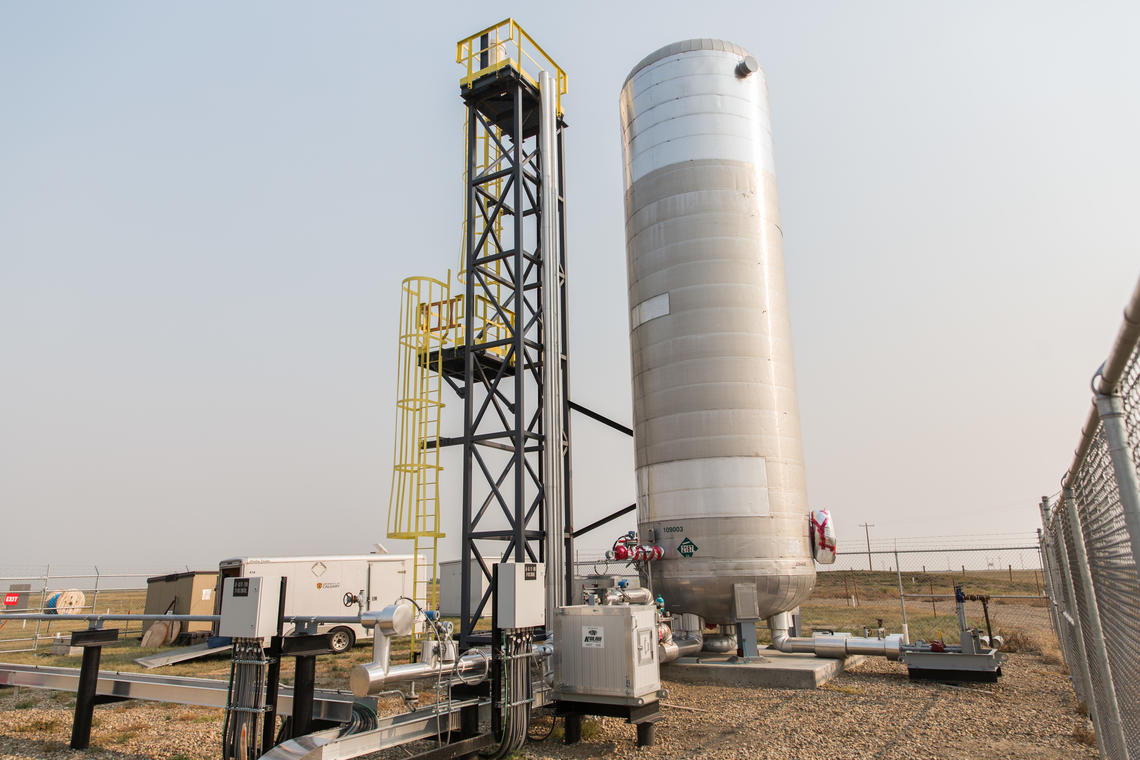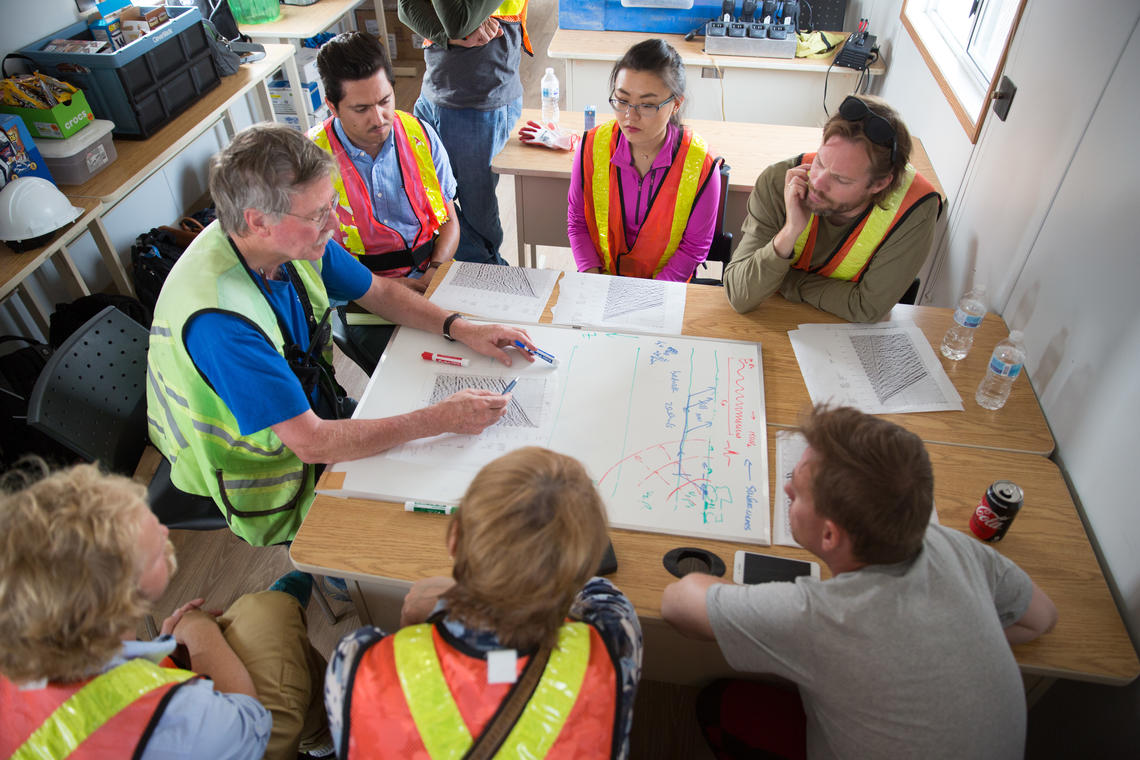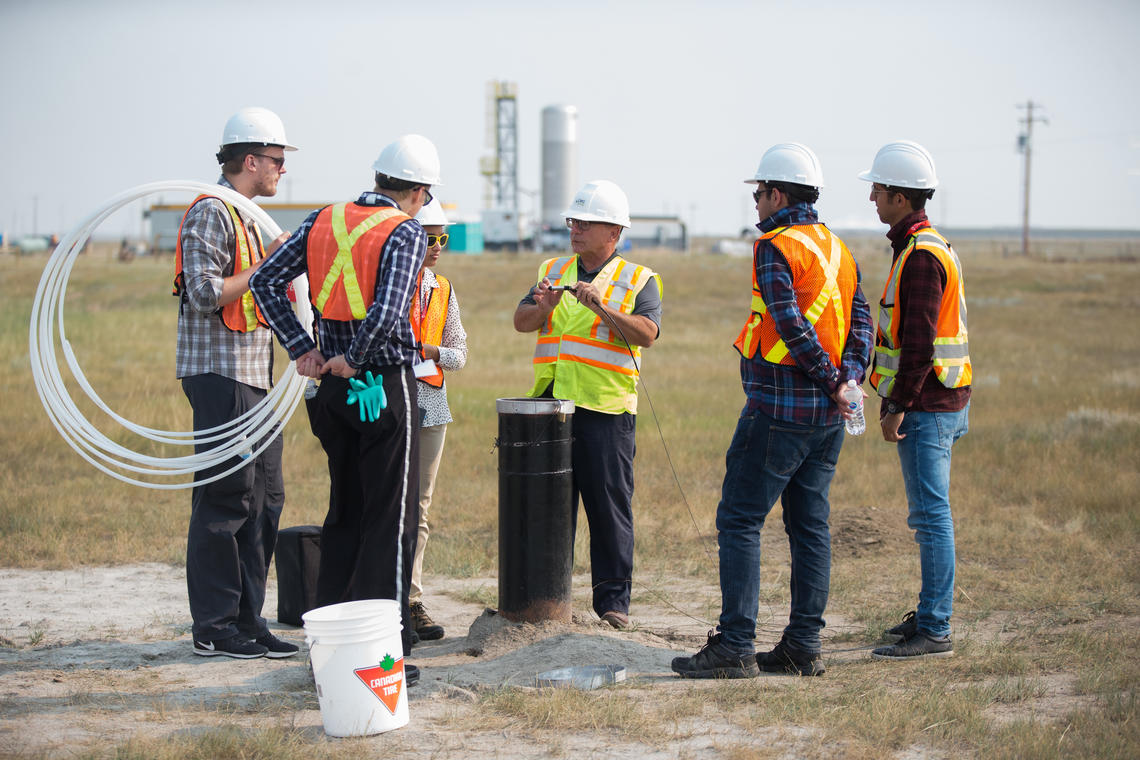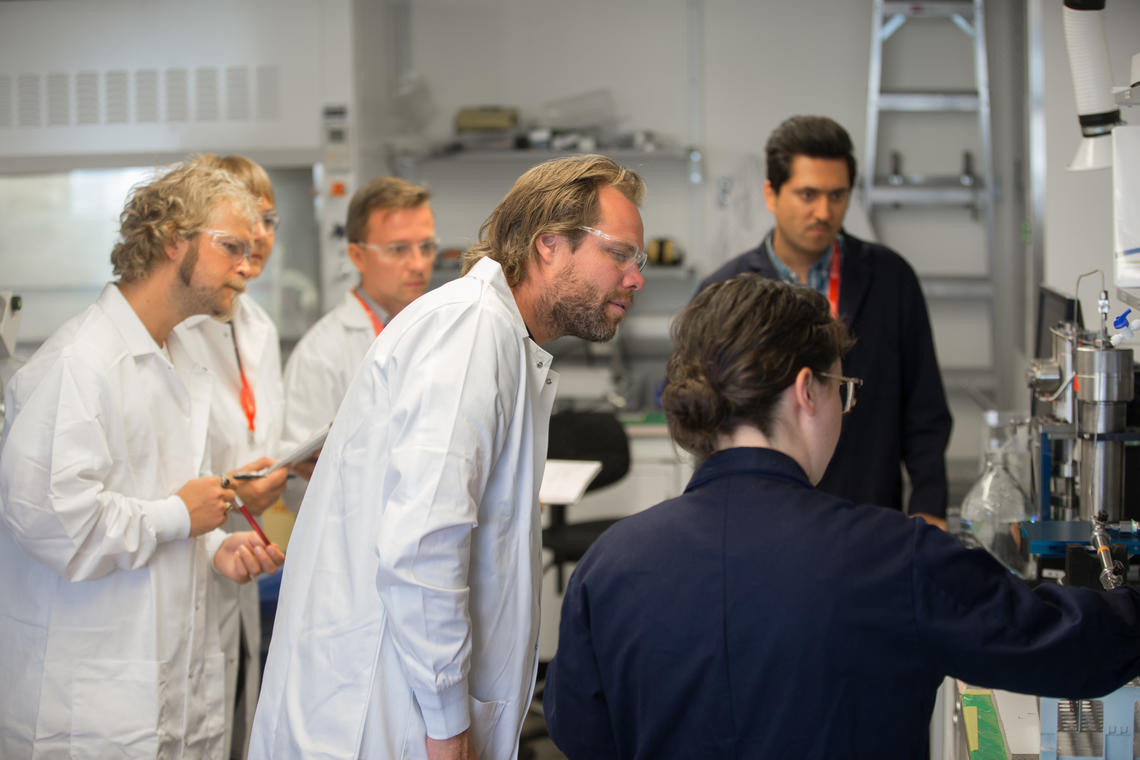Aug. 17, 2018
Norwegian students dig into carbon capture and storage in real-life oilfield experiments

More than a dozen PhD students and postdocs have headed back to Norway after a week in and around Calgary learning about ground-breaking techniques being developed at the University of Calgary to use nanoparticles to monitor CO2 in the subsurface.
The students from Norwegian University of Science and Technology (NTNU) were in Alberta as part of CARBEOR, a partnership to advance research and education on carbon storage and enhanced oil recovery. They spent time in laboratories, classrooms and in workshops at UCalgary, followed by field studies at the Containment and Monitoring Institute (CaMI) in Newell County, a geophysical monitoring site that is unique in the world.

The Containment and Monitoring Institute (CaMI) boasts a unique field research station.
Adrian Shellard, for the University of Calgary
The Containment and Monitoring Institute (CaMI), above, boasts a unique field research station for in-field testing of technologies to accelerate the development and deployment of technologies to measure, monitor and verify secure underground storage of CO2. In addition, CaMI provides an unparalleled opportunity to test, in-field, new technologies related to hydrocarbon production and environmental monitoring.
“The ability to do experiments in the field in real rocks at real scale is incredibly powerful,” says Dr. Steven Bryant, PhD, UCalgary’s co-manager of CARBEOR and Canada Excellence Research Chair in Materials Engineering for Unconventional Oil Reservoirs. “You can do lots of stuff in the lab and you can do anything you like on the computer but getting things into the real world is when you really find out how it’s going to work.”
The NTNU scholars spent two days at CaMI, learning about advanced geophysical monitoring techniques, including using nanoparticles to get better images of CO2 in the subsurface — research that could lead to better monitoring of sequestered greenhouse gases and enhanced oil recovery.

Don Lawton, left, explains the results of seismic waves at the CaMI field research station.
Adrian Shellard, for the University of Calgary
“No matter what you’re doing it’s always helpful if you can turn up the image contrast, whether it’s something medical or in the subsurface,” says Bryant. “We know nanoparticles can give us another tool that we can deploy to, in effect, brighten up the images.”
While NTNU has geophysical monitoring labs, researchers at the Norwegian university aren’t able to do real-life experiments in their oilfields. “We don’t have the rocks on land,” says Dr. Ole Torsæter, a NTNU professor in reservoir engineering, “Everything for us is offshore and then everything becomes so expensive.” Visiting CaMI offers the NTNU researchers “unique possibilities” as well as opportunities for collaboration on carbon capture and storage and other research projects, he says.

UCalgary and NTNU researchers at the CaMI field research station near Brooks, Alta.
Adrian Shellard, for the University of Calgary
“In Norway I’m doing rock physics and although we try to make experiments valid for the large scale, it’s hard because you have this upscaling issue,” says Stian Roerheim, a PhD student in engineering at NTNU. “That’s why it’s important to go to the field because things tend to not be exactly the same in the lab as it is in practice in the field.”
Olga Ibragimova, a postdoc at NTNU, focuses on the potential for improving properties of tailings through novel approaches, studying adsorption and desorption of chemicals in order to recycle them prior to submarine tailings deposition. “My task is to validate the analytical methods and measure the concentration of chemicals in tailings-seawater systems to be very sure that they are as non-toxic as possible. This knowledge, especially the study of nanoparticle properties, is a new technique for me and I believe that this training can be very useful in my future studies. I would like to develop my skills and explore the effect of nanoparticles properties on their performance for better understanding of the mechanism.”

Injecting magnetic nanoparticles in porous media and measuring the magnetic susceptibility of them.
Adrian Shellard, for the University of Calgary
UCalgary researchers and students have visited Europe twice as part of the three-year CARBEOR project, which also includes a graduate student exchange program. “One of the main objectives of CARBEOR is to give graduate students and researchers from both universities training opportunities and experiences in different environments,” says Dr. Don Lawton, PhD, director of CaMI, UCalgary’s co-manager of CARBEOR, and professor of geophysics in the Faculty of Science.
“Collaborating with researchers in Norway and elsewhere will help us all reach the end goal of more efficient energy production and reduced environmental impacts.”
CaMI, a partnership between the university and non-profit CMC Research Institutes, is supported in part by the Canada First Excellence Research Fund (CFREF) initiative, Global Research Initiative in Sustainable Low Carbon Unconventional Resources. The $850,000 CARBEOR partnership is funded by the Research Council of Norway and through in-kind funding from the Canada Excellence Research Chairs program.

UCalgary and NTNU researchers.
Adrian Shellard, for the University of Calgary
Above: UCalgary and NTNU researchers, front row from left: Marie Macquet, Carrie Youzwishen, Chen Qian, Carl Fredrik Berg, Xiaoqian Cheng, Ellen Liu, Somayeh Goodarzi, Cleide Rosemine Gany Vieira, Przemyslaw B. Kowalczuk, Sigve Hovda, Sahand Etemad, Carol Wang, Kyrre Heldal Kartveit, Ali Telmadarreie. Back row from left: Vegard Stenhjem Hagen, Dawid Szewczyk, Geir-Ove Strand, Ashkan Jahanbani, Olga Ibragimova, Heidi Jahandideh, Per Arne Slotte, Steven Bryant, Stian Rørheim, Håvard Slettahjell Skjefstad, Aseem Pandey, Don Lawton, Ole Torsæter.
